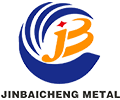This article will discuss the manufacturing process of hot-dip galvanized steel strip, the advantages and disadvantages of this material, commonly used steel grades, and highlight the characteristics that make it a popular choice in construction, home furnishing, transportation and other industries.
Hot-dip galvanized steel strip, also known as zinc strip steel, is a material that obtains its superior properties through complex production processes. The process involves dipping steel strip into a bath of molten zinc, which creates a metallurgical bond between the zinc and the steel. This galvanizing process gives the steel strip excellent resistance to corrosion and rust, making it ideal for outdoor applications.
The manufacturing process of hot-dip galvanized steel strip begins with the cleaning of the coil. Remove any impurities or contaminants to ensure a clean surface. The cleaned steel is then annealed to improve its ductility and reduce any strain that may have been induced during the cleaning process.
Once the steel is cleaned and annealed, it is ready for the galvanizing process. The steel strip is carefully passed through a series of zinc baths where it is coated with molten zinc. The process creates an even and durable zinc coating on both sides of the steel, providing excellent corrosion protection.
One of the advantages of hot-dip galvanized steel strip is its excellent corrosion resistance. The zinc coating acts as a protective barrier, preventing moisture and other corrosive elements from reaching the underlying steel. This makes the hot-dip galvanized steel strip extremely durable and long-lasting even in harsh environments.
Another advantage is its rust resistance. The zinc coating not only protects the steel from corrosion, but also acts as a sacrificial layer. If any part of the coating is damaged, the surrounding zinc is sacrificially corroded, protecting the steel from rust. This self-healing mechanism ensures the longevity of the steel belt, reducing maintenance and replacement costs.
Hot-dip galvanized steel strip also offers visual appeal and a smooth finish. Zinc coatings provide a shiny appearance that adds beauty to a variety of applications. This makes it a popular choice in the construction and home industry where appearance is critical.
When it comes to the grade of steel used for hot-dip galvanized strip, there are several common options. These include mild steel, ultra-low carbon steel, and high-strength low-alloy steel. The choice of steel grade depends on the specific application and required mechanical properties. Shandong Jinbaicheng Metal Materials Co., Ltd. provides a variety of steel grades to meet the diverse needs of customers.
While hot-dip galvanized steel strip has many advantages, there are also some disadvantages to consider. First, the production process can be energy-intensive and can have an impact on the environment. However, advances in technology have made production methods more efficient and environmentally friendly.
Also, hot dip galvanized steel strip can be more expensive compared to other types of steel. The added cost is due to galvanizing and complicated production process. However, the long-term savings outweigh the initial investment, as the durability of the steel belt reduces the need for frequent maintenance and replacement.
In conclusion, hot-dip galvanized steel strip is a versatile and durable material. Its corrosion resistance, rust resistance and beautiful appearance make it an excellent choice for various industries. Shandong Jinbaicheng Metal Material Co., Ltd. is a trusted supplier of hot-dip galvanized steel strip, providing a variety of steel grades to meet different requirements. With a commitment to quality and customer satisfaction, it’s no wonder their products are widely preferred by clients across the globe. For inquiries, please reach to our Official website: www.sdjbcmetal.com Email: jinbaichengmetal@gmail.com or WhatsApp at https://wa.me/18854809715 .
Post time: Nov-13-2023



